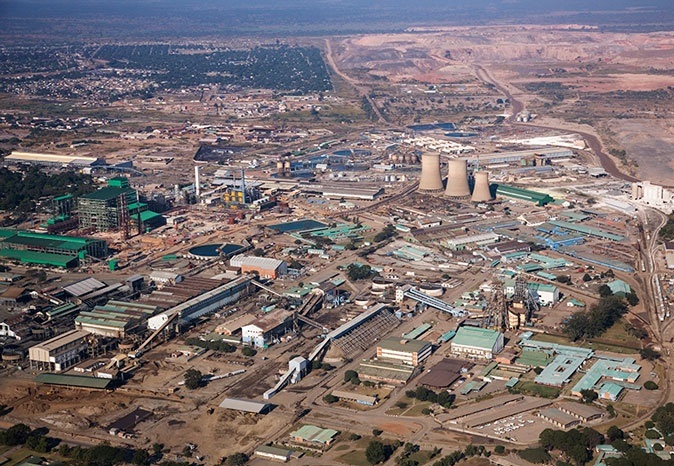
Chililabombwe is the city with the largest copper reserves in southern Africa. The first mining company, Bancroft Mine, opened 1957. Today, the Konkola Copper Mine (KCM) is the largest. Nevertheless, 80% of men work in subsistence agriculture. 15% have formal jobs. Since 1990 25% of the population left the city. Although KCM is currently tapping deeper shifts, 250 is opening up millions of tons of ore grading 4% to 2032.
Mining in Zambia is no longer competitive
Zambia's 2019 mining tax regime has significantly increased the tax burden on mining companies, making the sector inefficient and uncompetitive, according to a report by two of the country's leading economists.
Professor Oliver Saasa from Premier Consult and Shebo Nalishebo from the Zambia Institute for Policy Analysis and Research (ZIPAR) say that Zambia has by far the highest tax burden of all comparable mining countries and that under the new tax system for the mining sector, the effective tax rate - the average rate, with pre-tax profits would be between 86,3% and 105% depending on the copper price.
Zambia's Assessment of Mining Fiscal Regime: 2000-2019 also notes that even before the new tax regime, Zambia's mines were confronted with the world's highest effective tax rates, coupled with an unstable tax environment and a high cost profile for the average Zambian Mine this is a challenge to the business and leads to a deteriorating investment climate.
“The main objective of the tax regime for 2019 seems to be to increase the effective tax rate in order to increase tax revenue. Under the new system, the effective tax rate for Zambian miners could be over 105% if the price of copper exceeds $ 9.000 / t, the report said.
“With high copper prices this would lead to the extraordinary situation that a mine would be forced to pay more taxes than the profit made. No company can continue to work under these circumstances, ”add the experts.
They explain that although the former Finance Minister had argued that the tax changes in the 2019 budget would ensure that the sector paid its fair share of taxes, there seemed to be no clear guarantee that the policy changes would actually lead to an improved revenue stream from the mining sector to the Ministry of Finance.
However, the Zamia Chamber of Mines has made a clear statement to reaffirm that Zambia needs a competitive and stable tax system to attract investors and generate sufficient revenues from the mining sector.
The organization believes that government and private sector should seek to create a framework in which to build a modern, advanced, evolving commodity-based economy; a scenario in which investors compete for investment in Zambia.
Professor Saasa's analysis has also shown that the mining sector operates in an environment where mining actors urgently need to make a significant contribution to the Zambian economy through well-supported mine development programs.
“Over-taxing mines today has the potential to complicate the development of existing and new mining projects, which would result in low tax revenues in the future. It is clear that the tax system announced by the government in September 2018 for 2019 has posed significant obstacles to the prosperous development of the mining sector, ”the report continued.
He points out that the lack of a well-structured dialogue mechanism between the government and the actors in the mining sector has contributed to the government's seemingly limited understanding of the intricacies of mining that should be taken into account in shaping mining policy.
The taxes and royalties paid to the government contribute significantly to the economy. In the first half of 2019, the direct contribution from the mining sector was 13% of domestic sales.
The indirect contributions of mining companies amounted to 8% of domestic sales. Thus, the total contribution of mining companies in Zambia amounts to 21% of domestic sales.
The five largest mining companies (Kansansanshi, Sentinel, KCM, Lumwana and Mopani) contributed 2018 and 2019 96% to total copper production in XNUMX and the first half of the year. The production figures have declined in recent months.
While production for the top 5 mines fell by 2%, production in the smaller mines in the first half of 2019 decreased by 2018% compared to the first half of 45.
“To ensure the unhindered growth of the mining industry, the Zambian mining tax system should be stable and predictable, considering that the frequent political changes Zambia has seen over the years have generally hindered the long-term development of the mining industry.
“The petroleum tax systems should ensure adequate payments to both the country and the investor. An effective and efficient mineral tax system aimed at attracting foreign direct investment should therefore seek to adequately compensate the country while remaining internationally attractive and competitive, ”the report said.
Mining Review / ISE - September 2019
